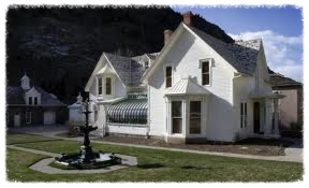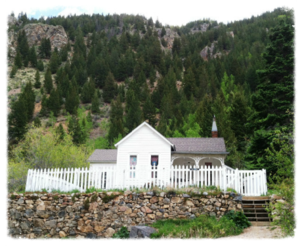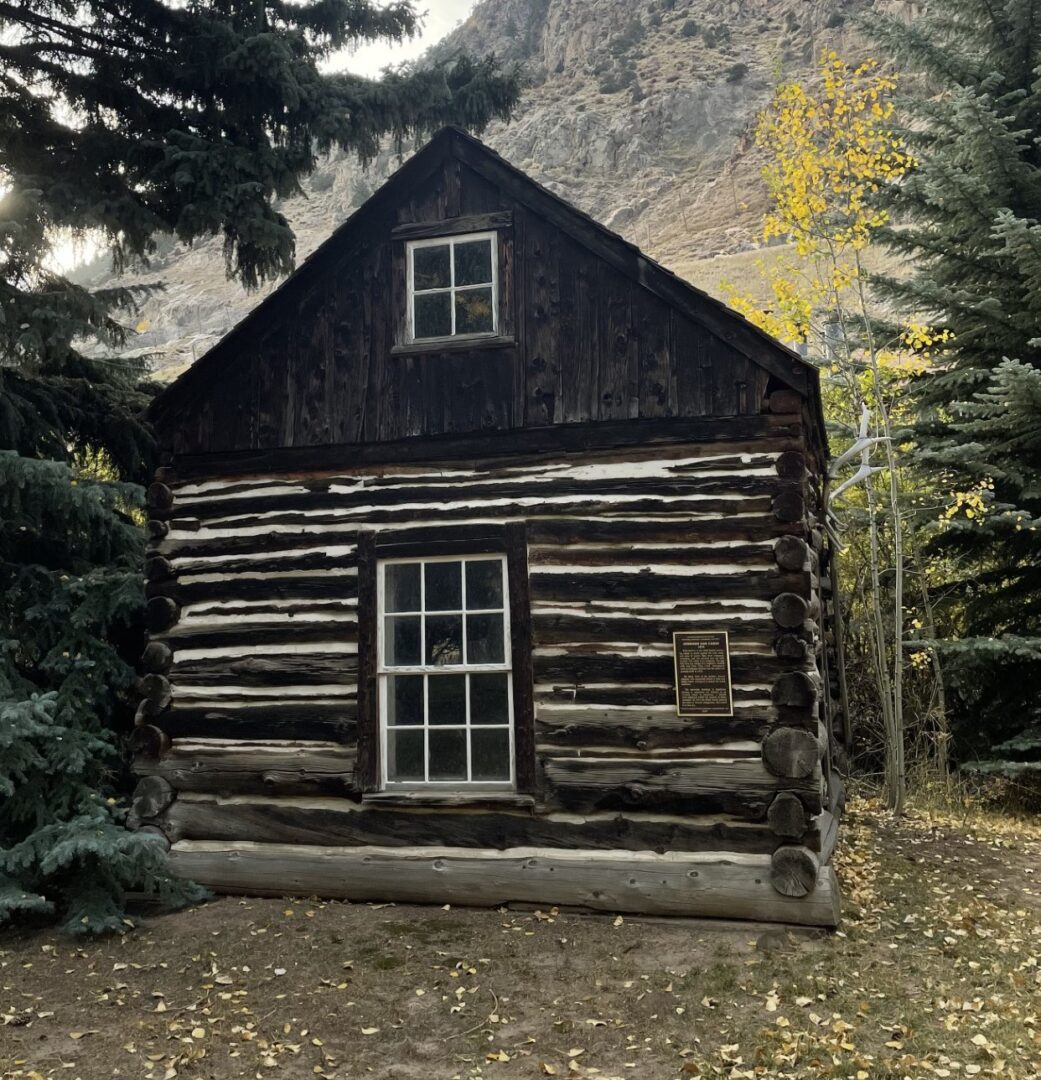Preserving Historic Properties in Georgetown

The Hamill House Museum: 1867, 1879
305 Argentine Street, Georgetown
The Hamill House Museum is the centerpiece of Historic Georgetown, Inc.'s comprehensive residential interpretation of the Georgetown-Silver Plume National Historic Landmark District within the context of the Rocky Mountain Mining West. The museum interprets 19th-century residential living in Georgetown, CO including architecture, furnishing, Victorian plants, and landscaping as well as social and cultural lifestyles.
It was originally constructed by Joseph Watson as a modest Country Gothic house. In 1867, it was later purchased by Watson's wealthy brother-in-law, William Arthur Hamill. By 1879, Hamill had greatly expanded the mountain estate into a lavishly beautiful home with its conservatory, gaslighting, bay windows, walnut woodwork, central heating, and luxurious interior decor. There are even other buildings on the property including a carriage house, Mr. Hamill's granite office building, a laundry/summer kitchen, and a spacious six-seater privy.
Hours of Operation
The Hamill House is open by appointment only.
Please call (303) 569-2840 or email [email protected] to schedule your tour.
Admission Cost
Free, but donations are suggested and appreciated.
Visit the Hamill House at 305 Argentine Street, Georgetown, CO. To schedule your group or private tour of the Hamill House, call Historic Georgetown, Inc. at (303) 569‑2840 or email us at [email protected].
The Kneisel House: 1870
The Kneisel House is typical of a Georgetown middle-class dwelling during the town’s silver boom. Sometime around 1875, this house was built by local merchant Henry Kneisel who opened a bakery and later operated a grocery store, which he ran in partnership with his son-in-law, Emil Anderson. Additionally, a hardware business was incorporated in 1918.
The store on 6th Street has been in business for more than 100 years and managed by five generations of the Kneisel and Anderson families. After being purchased from the family in 1998, the Kneisel House is currently rented by a local family.
In today’s modern world, the home is still being used in a way that mirrors its purpose in the past while protecting its historic value and integrity. The Kneisel House is a private residence and not available for public tours at this time.


The Centennial Mill: 1929
Located on 3rd Street just below Guanella Pass Road, The Centennial Mill is the last surviving mill structure in Georgetown. At the peak of its mining industry, Georgetown was a highly industrial community. With the regrowth of trees and the loss of most of the industrial structures in town, today, Georgetown is frequently only perceived through its architecture as a bucolic Victorian-era mountain community. Its “hammers and rocks” image is relegated to outlying mining areas, when in fact mining was as much a part of daily community life in town as it was on the neighboring mountainsides.
Historically, the mines of the Centennial Group were the setting for some of the earliest and most lucrative mineral finds in the district. Many mines and mills were opened and then closed periodically over the decades due to the ever-booming and busting economic cycles in Colorado. Consequently, the Centennial Mill represents two periods of mining. Formerly in a different location, it was known as the Griffith Mill, which was a late 19th-century structure.
The Western States Mining company that bought out the Centennial group of mines purchased the Griffith Mill, disassembled it—a common practice at the time due to the high value of timber and mining equipment—and reassembled the Centennial Mill at its current location in 1929. The new site was optimal as it was in close proximity to the Colorado Central Railroad, which made the transfer of ore to the Denver smelters highly cost-effective for the Centennial Group. The mill utilized a then-revolutionary system known as flotation—patented by Mrs. Carrie Everson in 1885. Two mills operated during the depression in Georgetown using the flotation system, and it was considered state-of-the-art technology in 1929.
Centennial Mill is the last example of Georgetown’s prominence in the development of mining technologies in the late 19th and early 20th centuries. In 2004, the mill was acquired by Historic Georgetown, Inc. thanks to the generosity of many private donors, the Colorado State Historical Fund, the 1772 Foundation, and the Challenge Cost Share Program through the National Park Service. Currently, the Centennial Mill is not open for tours.



